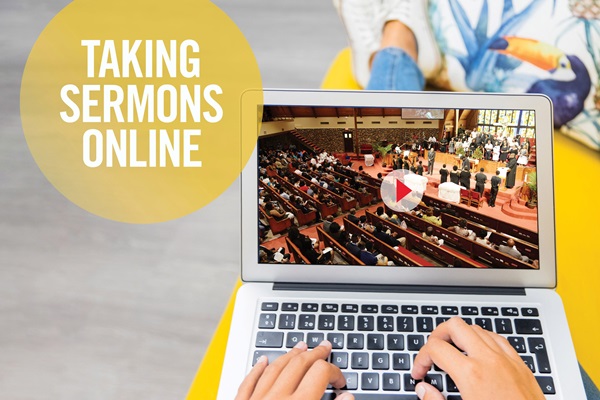Since sermon- and lesson-writing for Sunday are the prime times pastors and other church leaders prepare original and evergreen content, MyCom is focusing attention on new ways to share your messages beyond the service through digitization and content marketing. Church leaders' time is often stretched thin. They serve their members, community, family and their own spiritual life. Repurposing sermons and lessons for an online world just makes sense!
Every week, pastors research, study, write and deliver sermons to their congregations. Often, once the sermon is preached, it lives on only in notes or memory.
Hours after pastors finish one sermon, they begin writing a new one for the next Sunday. In fact, 36% of pastors say they start sermon-writing on Monday.
How does a pastor make a sermon relevant and impactful in the long term for the millennial who's just started to go to church, the senior Sunday school couple and everyone else in between? And how do you reach those who aren't able to come to church every Sunday? Can sermons live on once they've been delivered?
Given the effort it takes to research and write as compellingly as possible every week and the goal of ministry to transform the world, you need to ensure your sermons are reaching as many people as possible on Sunday and beyond. We've compiled tips and tools to hlep you do just that.
First, consider why you should make your sermons and lessons digital.
- Sermons will have a longer lifespan
Making sermons and other church content available on the church website or church app means people in the community can revisit messages a week, a month or even a year after the message was delivered.
Learn whether an app will help your church better engage with your surrounding community and deepen the impact of your content. (Pushpay, contributor of this article, offers expertise in app and other digital solutions for faith-based organizations.)
- People consume content differently
The reality is that not everyone in your church on Sunday morning is processing every word of the sermon. They might be sitting there with fidgety kids, or they may otherwise become distracted during the sermon. On top of that, some people listen more effectively when they're actively doing something. Providing alternative ways to receive or reinforce messages enables people to process your teachings in a manner and place that's best for them.
- You can reach people outside the church
Imagine someone coming home from a service and being so inspired by something you taught that they can't wait to share it. Digitizing your sermons offers ease in that opportunity. Members or visitors can email, text or share your message on Facebook. This gives your members the ability and agency to share your church's messages with people who may not step foot in a church. Sounds like evangelism!
Ultimately, making your sermons available online in a central archive allows you the opportunity to reach more people and touch more lives. It's a lot easier and less time-consuming than you imagine.
In fact, there are a number of popular and easy-to-use mediums people use every day to stay informed, learn or just be entertained.
In part 2 of this guide in the next issue of MyCom, we'll detail which digitization ideas and tools work best in building a multimedia archive based on your sermons and lessons.
Pushpay builds world-class digital giving solutions and custom smartphone apps designed for faith-based organizations.

